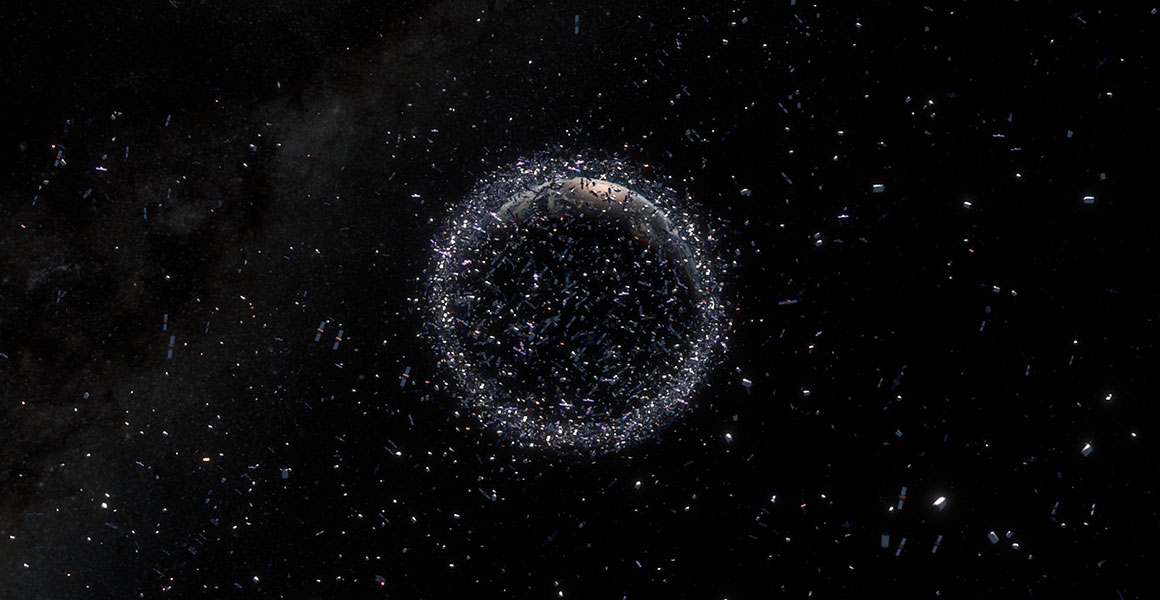According to the most recent report of NASA’s Orbital Debris Program Office’s Orbital Debris Quarterly News, there are 25,182 pieces of space debris larger than 10 cm in lower earth orbits near 2,000 kilometres of the planet’s surface. India is responsible for only 114 space debris items, whereas the United States has 5,126 space debris objects in Earth’s orbit and China has 3,854 space debris objects in Earth’s orbit, including spent rocket bodies.
According to the research, India’s space debris levels have returned to those of 2018, following a rise in 2019 when the country conducted its first-ever anti-satellite test.
What exactly is space debris?
Any man-made object in earth orbit that no longer serves a useful purpose is referred to as space debris, or space garbage. Space debris can be large items, such as failed satellites that have been left in orbit, or small objects, such as bits of debris or paint flecks that have fallen off a rocket. This debris can range in size from a leftover rocket stage to a minuscule paint speck. Much of the junk is in low Earth orbit, close to the Earth’s surface.
Almost all of the debris is in low Earth orbit, within 2,000 kilometres (1,200 miles) of the Earth’s surface, while some debris can be found 35,786 kilometres (22,236 miles) above the Equator in geostationary orbit. Experts believe that all space debris is the product of humans shooting items into space. Debris or satellites left at higher altitudes of 36,000 kilometres, where communications and weather satellites are frequently put in geostationary orbits, can circle Earth for hundreds or even thousands of years.
Other times, space debris is created when two satellites collide or when anti-satellite tests are conducted. Anti-satellite tests are uncommon, although the US, China, and even India have all employed missiles to destroy their own satellites.
India’s anti-satellite test and the debris that resulted
On March 27, 2019, India performed Mission Shakti, an anti-satellite missile test, from the Dr. A P J Abdul Kalam Island launch complex, making space debris a major topic of discussion. India conducted the test by destroying a defunct Indian satellite orbiting at 300 kilometres. The incident made headlines since India became only the fourth country in the world to possess such technology, after the United States, China, and Russia.
The dangers of space junk
- The most serious issue with space trash is the threat it poses to other orbiting satellites. These satellites could be impacted by space debris, which could damage or destroy them.
- Satellite operators may face higher costs as a result of the debris. According to industry estimates, space junk protection and reduction initiatives account for around 5-10% of satellite mission expenses.
- Pollution from space debris could render certain orbital areas uninhabitable.
Is it possible for us to clear all the debris in space?
- According to NASA, trash in orbits less than 600 kilometres will fall down to Earth in a few years, whereas garbage in orbits greater than 1,000 kilometres will circle the Earth for a century or more.
- To find and reclaim used satellites and other space debris, Japan’s Aerospace Exploration Agency teamed up with Astroscale, a Japanese start-up.
- The European Space Agency is collaborating with ClearSpace, a Swiss start-up, to fly a mission in 2025.
- The Indian Space Research Organisation (ISRO) was investigating the technology needed for active debris removal in India.
- ISRO has established the Directorate Space Situational Awareness and Management, according to Minister of State in the Prime Minister’s Office Jitendra Singh.





 Which City is known as the City of Bambo...
Which City is known as the City of Bambo...
 Who was the First Prime Minister of Indi...
Who was the First Prime Minister of Indi...







